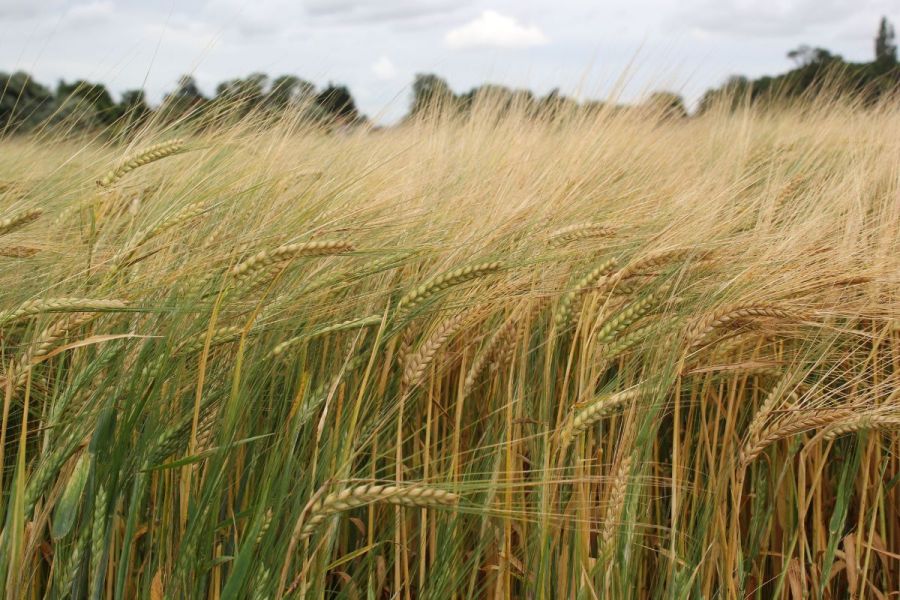Brew-only spring barley varieties don’t come along that often and although it’s only currently provisionally approved by the Malting Barley Committee (MBC), Skyway appears to be carving a path for itself. CPM finds out what elevates it from other spring barleys.
“Skyway provided us with some of the best samples of barley we saw last harvest.”
By Melanie Jenkins

John Miles says that both Skyway’s yield and grain quality has shone during trials.
While Laureate and RGT Planet remain firm favourites with brewers, hard on their heels is new variety Skyway. As well as an improved yield, with the second highest on the AHDB Recommended List at 105% of control, Skyway offers a step up in quality.
According to John Miles of Agrii, it was both Skyway’s yield and grain quality which really shone during trials. “Within our data set it was hard to ignore because of its yield potential and grain quality, which are hugely important characteristics for brew-only spring barley varieties.
“We often find that when breeders are pushing yields, they create more grain sites and this can be detrimental to specific weight, but with Skyway there’s something unique because it has both strong yields and high specific weight.”

Skyway is one of the lovechildren hailing from a union between Agrii, Nordic Seed and Throws Farm in Essex, says Colin Lloyd.
Skyway is one of the lovechildren hailing from a union between Agrii, Nordic Seed and Throws Farm in Essex, which started in 2011, explains his colleague Colin Lloyd. “It became clear there was an opportunity to work together in the UK. After further meetings and visits to Nordic Seed in Denmark in 2012, the decision was made to start looking at early lines here to test their performance.”
The first stage of this partnership involved winter wheat, but by the spring of 2013 several lines of spring barley were introduced the year prior to NL 1. “Great strides were made over the next few years under the watchful eye of Colin Patrick, seed trials manager at Throws, before Agrii entered Skyway into the National RL system,” says Colin.
One of Agrii’s aims while trialling the variety has been to determine its ability to combat blackgrass. “Skyway featured at the Stow Longa blackgrass site in 2022, being one of six blocks in the on-going rotations trials which is now in its eighth year.”
Having switched one rotation block to Skyway to assess its competitive effect on blackgrass populations, Colin was really pleased with the results. “It produced the highest gross margin after cultivations, drilling and all inputs when compared with the other blocks, which included winter beans, second wheats and spring oats.
“The ploughed area within this work led to a margin of £1537/ha, which was £200/ha more than either of the two second wheat blocks with the same cultivations,” he explains.
“There is no doubt that spring barley in the rotation helps greatly in the blackgrass battle – better than second wheat – and Skyway was easy to manage agronomically in this experiment, with no lodging or brackling.”
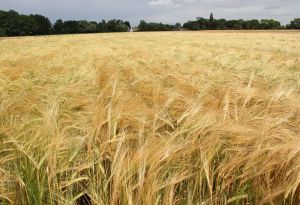
Skyway scores a 7 for resistance to lodging on the RL and has an 8 for brackling.
Skyway scores a 7 for resistance to lodging on the RL and has an 8 for brackling, confirms John. “Admittedly, we’ve seen less brackling than in previous years – except in the West. We’re expecting its score to drop to 7. However, we believe the lodging score will remain the same, based on the data this year.”
Looking at Skyway’s characteristics, John points out that powdery mildew isn’t an issue as, like all new spring barley varieties, Skyway has the MLO gene which is effective against all races of the pathogen.
It scores 4 against brown rust which is lower than its rivals but its rhynchosporium score is rated 7 – similar to Laureate, he admits. “It’s not the very cleanest of varieties, but realistically it’s Laureate and Planet we’re comparing it with. There’s no hiding the scores but it comes back to yield, which is at least three percentage points higher than the two market leading varieties.”
But he believes this is enough to attract growers to it. “Spring barley is a lot easier to look after than winter wheat and while it might have a lower brown rust score, you should look at this in the same way as brown rust in wheat – keep it out at T1, keep it clean.”
The yield and grain quality will also attract the attention of feed barley growers, adds John. “The combination of straw length and high tiller number should provide good straw yields.”

Mark Glover feels that Skyway could potentially take market share from the more established varieties.
Agrii colleague Mark Glover has had farmers with Skyway for the past two years and notes the variety has been straightforward to grow. “It’s got a good lineage with Planet as a parent and I haven’t found any particular weaknesses in terms of disease, which is good.”
The seed crop Mark managed last year was direct drilled behind grass and didn’t get the kindest start, but despite this it got away very nicely.
“In some ways it was a boring variety to grow. It has a robust agronomic package – it’s brackling resistance looks pretty good, lodging resistance with a little PGR applied is decent, it’s not overly tall and it’s neither early nor late,” he explains. “Skyway’s yield potential compared with the control is up 4-5% and its specific weight is better than most.
“It’s also pretty consistent in the East or the West, which is an advantage for both the breeder and the farmer – especially with our unpredictable seasons. This gives the variety a good robustness,” adds Mark.
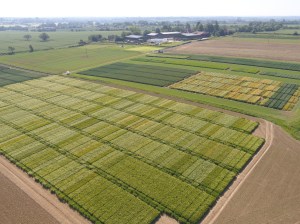
In Agrii’s direct drilling trials, Skyway has demonstrated a 0.6t/ha yield advantage over Planet.
According to John, a lot of spring barley is being used in direct drilling situations at the moment. “There’s a bit of commentary about the sustainability of varieties for direct drilling, so we thought it was sensible to look at how Skyway’s habit suits this situation. We had seven strip trials last spring and results so far, from six of the trials, show that Skyway averaged 0.6t/ha more in yield compared with Planet. Its performance really stuck out in a direct drilled situation.”
As far as market potential goes, Tom Eaton of Viterra believes that Skyway has scope, both in terms of on-farm performance and for maltsters. “The growers we’ve spoken to have all been very positive and want to grow more for Harvest 23 and beyond.
“We’ve sent small samples to maltsters to trial and the feedback from them is good,” he says. “The expectation is for the variety to get full malting approval in the second quarter of 2023. If it gets this, I think it’s likely that Skyway will take market share from other staple varieties as it will definitely be supported on farm. And it looks as though there could be good premiums available for next harvest.”
Boortmalt has been trialling Skyway for the past few years and feel it could provide a successor to Planet, according to the firm’s Jonathan Roberts. “We favour standalone, brew-only varieties, and at the moment that’s Planet but we see Skyway as a variety that could replace it. There aren’t many brew-only varieties coming down the track as there seems to have been a decision by breeders to pursue dual-purpose varieties, so Skyway bucks this trend.
“Skyway provided us with some of the best samples of barley we saw from harvest 2021, in terms of tests and analytical parameters,” he explains. “It looked good, and the maltsters were very happy with how it performed throughout the process. We’ve built on the couple of hundred tonnes we had last year and now have more from Harvest 22 that we will begin to take in from January. If Skyway continues to produce positive results, then we will look to build on this.”
Although Skyway looks like it could take market share from other mainstay varieties, Jonathan feels that Laureate will remain the market leader. “I think Laureate will continue to be the biggest variety but, for us, it’s important not to get into a monoculture of varieties. It’s good to have options, of which Skyway could be one in the future.”
Mark agrees that Skyway could potentially take market share from the more established varieties. “It’s the end market which will determine whether Skyway gets traction or not – even if it has the best qualities for the grower, such as yield and standing ability. But if the demand is there from maltsters, it could take market from established varieties like Planet and Laureate.”
Because of its performance, Boortmalt is a keen supporter of Skyway getting approval, says Jonathan. “If its performance stays positive, Boortmalt will deliver a report to support the approval process. The variety could be a useful option for southern farmers to avoid cropping moving towards varieties that can only be exported.”
Standing the test
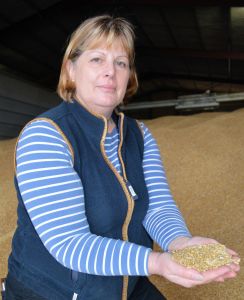
Freya Morgan was really pleased with the Skyway’s yield, especially considering the crop had no rain after it was drilled.
Having an early maturing spring barley is a vital cog in the machine that is Freya Morgan’s farming enterprise. Working around 1500ha of owned, rented, share, contract and collaboratively farmed land near Huntingdon on the Bedfordshire/Cambridgeshire border with her son Joshua, it’s important that crops fit together to enable them to manage the workload.
Growing winter wheat, winter barley, spring barley, winter oilseed rape (when conditions allow) and winter beans, Freya uses spring barley to take some of the pressure off in the autumn. “We’ve always grown spring barley to ease autumn management and because we’re on heavy clay and blackgrass can be quite a big problem. It’s really helped us get it under control, on the whole, and has been a really good cashflow tool.”
But when it comes to harvest, the crop tends to come ripe when she’s in the middle of combining winter wheat. “We grew Laureate before and it would end up brackling, with quite a lot of heads ending up on the floor if we couldn’t harvest it on time.”
So when her agronomist asked her to grow Skyway, Freya was interested to try it. “We first put it in the ground in spring 2021 so we could compare it with Laureate. Skyway stood up, didn’t brackle and was really straightforward to harvest.” Because of this, she decided to grow 100% Skyway in 2022 and plans to do the same in 2023.
Ahead of drilling, the ground is lightly subsoiled in the autumn before being tined and left stale over winter to get a good blackgrass kill. “Ideally we direct drill with a 6m Kverneland tine drill into the stale seed but, if need be, we cultivate in the spring ahead of drilling,” she says.
“We drill seeds at about 200kg/ha and use 120kgN/ha and 30kg SO3/ha. It’s a relatively cheap crop to grow and because it was so dry this year, we only spent £16/ha on herbicides, £10.50 on fungicides and £8/ha on trace elements. But each year the weather is different, so we try to utilise the characteristics of each variety. For example, Skyway has a 9 for mildew and a 4 for brown rust.”
At harvest Skyway really stood out, she notes. “It stood up and didn’t brackle. This meant we could prioritise cutting winter wheat if we need to get the quality and leave Skyway a bit longer before cutting it. This helps keep our work rate up and our combine operator is happy that it’s easy to harvest. Even the man who bales the straw really likes it, claiming that it doesn’t smash up,” explains Freya.
Skyway achieved yields of 5.5-6.5t/ha, with grain nitrogen ranging from 1.59% to 1.79% and specific weights averaged between 66.3kg/hl and 69.9kg/hl in 2022. “We were pleased with the Skyway, especially considering the crop had no rain after it was drilled,” says Freya. “The sample had a nice bold grain, low screenings and coped well in the extreme heat.”
Freya’s Skyway is grown on contract and has gone for malting the past two years. “It has a nice little premium on it and the maltsters seem happy with it, so hopefully it’s got a good future going forward.”
Skyway at a glance
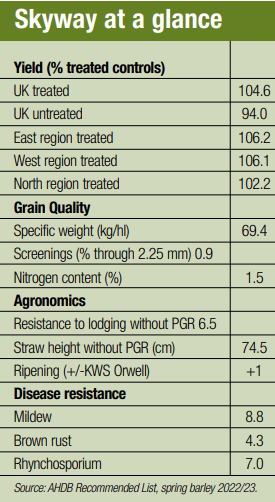
This article was taken from the latest issue of CPM. For more articles like this, subscribe here.

